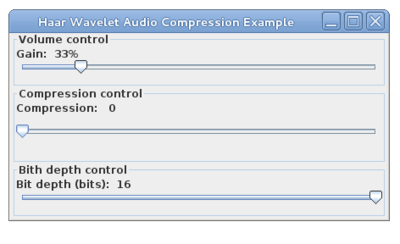~ TarsosDSP on Android - Audio Processing in Java on Android
» By Joren on Thursday 14 August 2014 This post explains how to get TarsosDSP running on Android. TarsosDSP is a Java library for audio processing. Its aim is to provide an easy-to-use interface to practical music processing algorithms implemented, as simply as possible, in pure Java and without any other external dependencies.
This post explains how to get TarsosDSP running on Android. TarsosDSP is a Java library for audio processing. Its aim is to provide an easy-to-use interface to practical music processing algorithms implemented, as simply as possible, in pure Java and without any other external dependencies.
Since version 2.0 there are no more references to javax.sound.* in the TarsosDSP core codebase. This makes it easy to run TarsosDSP on Android. Audio Input/Output operations that depend on either the JVM or Dalvik runtime have been abstracted and removed from the core. For each runtime target a Jar file is provided in the TarsosDSP release directory.
The source code for the audio I/O on the JVM and the audio I/O on Android can be found on GitHub. To get an audio processing algorithm working on Android the only thing that is needed is to place TarsosDSP-Android-2.0.jar in the lib directory of your project.
The following example connects an AudioDispatcher to the microphone of an Android device. Subsequently, a real-time pitch detection algorithm is added to the processing chain. The detected pitch in Hertz is printed on a TextView element, if no pitch is present in the incoming sound, –1 is printed. To test the application download and install the /files/attachments/420/TarsosDSPAndroid.apk(/files/attachments/420/TarsosDSPAndroid.apk) application on your Android device. The source code is available as well.
1
2
3
4
5
6
7
8
9
10
11
12
13
14
15
16
17
AudioDispatcher dispatcher = AudioDispatcherFactory.fromDefaultMicrophone(22050, 1024, 0);
PitchDetectionHandler pdh = new PitchDetectionHandler() {
@Override
public void handlePitch(PitchDetectionResult result, AudioEvent e) {
final float pitchInHz = result.getPitch();
runOnUiThread(new Runnable() {
@Override
public void run() {
TextView text = (TextView) findViewById(R.id.textView1);
text.setText("" + pitchInHz);
}
});
}
};
AudioProcessor p = new PitchProcessor(PitchEstimationAlgorithm.FFT_YIN, 22050, 1024, pdh);
dispatcher.addAudioProcessor(p);
new Thread(dispatcher, "Audio Dispatcher").start();
Thanks to these changes, the fork of TarsosDSP kindly provided by GitHub user srubin, created for a programming assignment at UC Berkley, is not needed any more.
Have fun hacking audio on Android!

